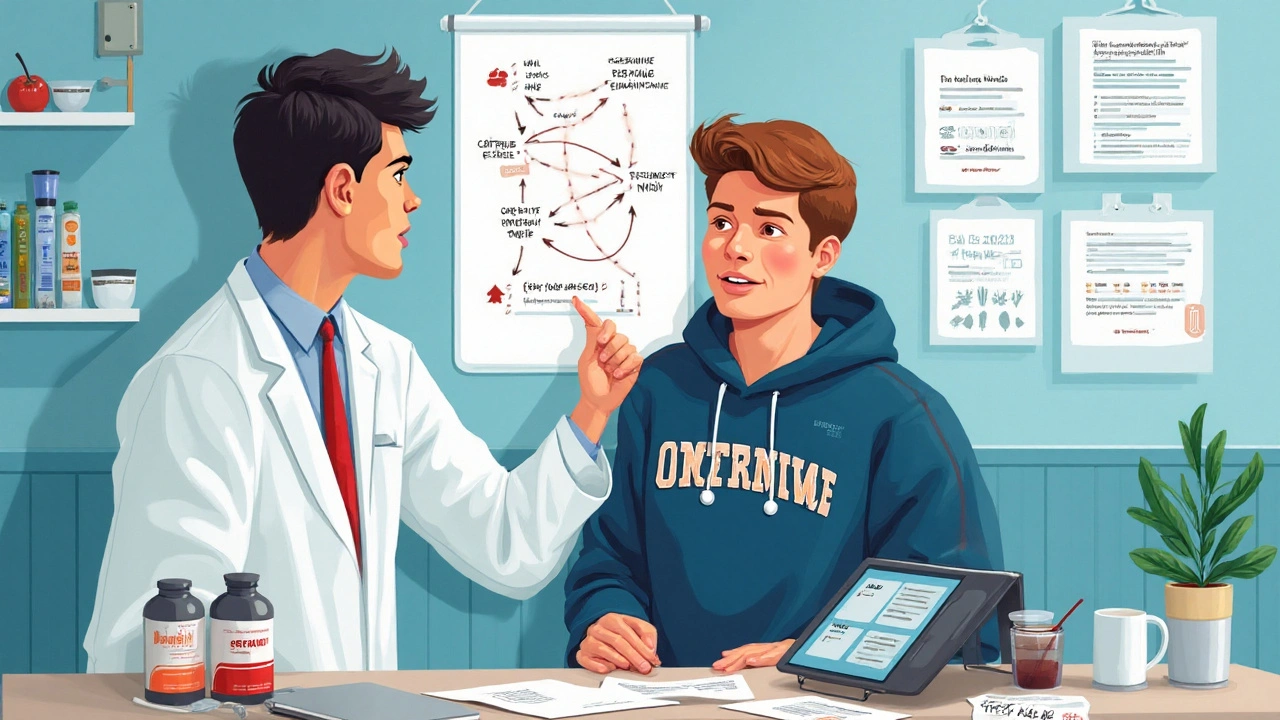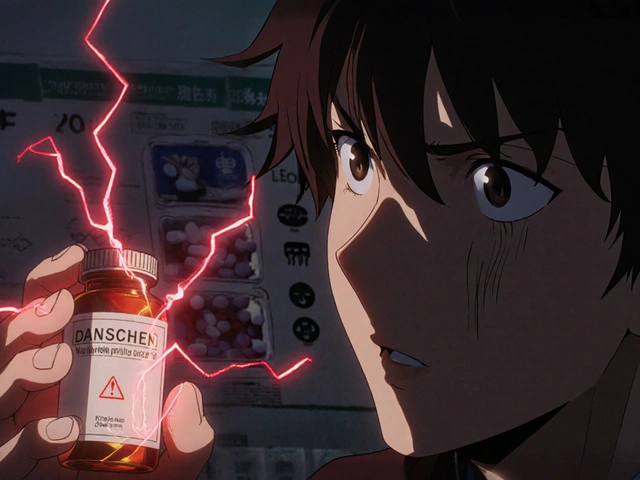Chasing peak performance can make anything that promises fast gains look tempting. Androstenediol gets hyped as an “ultimate” supplement, but the truth is less shiny: it’s a steroid precursor with thin real-world benefits, real risks, and very real legal and anti-doping issues in 2025. If your goal is more strength, power, or recovery, here’s a straight, evidence-led path that keeps you safe and on the right side of the rules.
- TL;DR: Androstenediol is a steroid prohormone, not a typical supplement. Evidence for performance gains is weak; risks and legal issues are strong.
- In the UK (2025), it’s controlled under steroid laws; WADA bans it at all times. Positive tests can end careers.
- Creatine, caffeine, beta‑alanine, nitrate, and smart training deliver safer, proven gains.
- If you’re still considering hormones, get medical labs, discuss with a clinician, and understand the legal and doping fallout.
What Androstenediol Actually Is, What It Does, and Why It’s a Legal Minefield in 2025
First, definitions. Androstenediol refers to several related molecules (most commonly 4‑androstenediol and 5‑androstenediol) that act as precursors in the body’s steroid pathways. In simple terms, enzymes can convert them into androgens like testosterone and dihydrotestosterone (DHT), and also into estrogens. That’s the pitch: take a precursor, get more anabolic hormones, perform better.
Reality is messier. Enzyme activity varies person to person. Some conversion goes down alternative, less helpful paths. And any hormonal nudge can come with side effects-think acne, hair loss, gynaecomastia, mood swings, blood lipids worsening, and liver strain.
What does the science say? Research on prohormones as a category is underwhelming for performance. Several late‑1990s to early‑2000s trials in resistance‑trained men reported little or no strength or muscle gains versus placebo, while showing hormonal disruptions and adverse lipid changes. For example, a JAMA trial on a closely related prohormone found no lifting benefit but a drop in HDL cholesterol and shifts in sex hormones. Endocrine Society scientific statements have repeated the same message for years: non‑prescribed anabolic agents and their precursors are not established as safe or effective for performance, and the risk profile is non‑trivial.
Now the law. In the UK (2025), anabolic steroids and many precursors fall under the Misuse of Drugs Act as Class C substances. Possession for personal use has nuances, but importing, supplying, or selling without the right authority is illegal. The Medicines and Healthcare products Regulatory Agency (MHRA) treats anything with medicinal claims or pharmacological action as a medicine, not a food supplement. In plain English: if a capsule is acting like a hormone, UK authorities see it as a drug, not a vitamin.
Anti‑doping rules are even stricter. The World Anti‑Doping Agency bans anabolic agents and their precursors at all times-training or competition. UK Anti‑Doping follows that list. Even “grey market” products can trigger a positive test through contamination.
WADA 2025 Prohibited List: “Anabolic agents (including anabolic-androgenic steroids and their precursors) are prohibited at all times (in- and out-of-competition).”
In the US, the Anabolic Steroid Control Act of 2004 pulled many prohormones out of the supplement market and under controlled substance laws. EU regulators treat these substances similarly. Wherever you are, the trend is the same: this is not a normal supplement shelf discussion.
Let’s call it straight: androstenediol is a pharmacologically active prohormone with weak performance data, strong downside risks, and clear legal and anti‑doping exposure in 2025. If you’re an athlete, it’s a career‑ender risk. If you’re a recreational lifter, it’s a health and wallet risk with better options on the table.

A Safer, Evidence‑First Route to Peak Performance (Step‑by‑Step)
You can push strength, power, or endurance without flirting with bans or dodgy capsules. Here’s a practical plan I’ve seen work, backed by solid data.
-
Pick a single measurable goal for 8-12 weeks. Examples: add 20 kg to total, cut 30 seconds off a 5K, increase peak power by 5%. Focus beats scatter.
-
Dial the big three first: training, sleep, protein.
- Training: progressive overload (add load/reps/sets by ~5-10% across the block). Periodize; deload every 4-6 weeks.
- Sleep: 7-9 hours; athletes in hard blocks may need 8-10. Track “time in bed” as the controllable metric.
- Protein: 1.6-2.2 g/kg/day split over 3-5 meals. Carbs around training help performance and recovery. Creatine works better with carbs and consistent dosing.
-
Use legal, proven supplements that actually move the needle. These are the heavy hitters backed by meta‑analyses:
- Creatine monohydrate: improves high‑intensity performance and strength; long‑term safety is well supported.
- Caffeine: boosts endurance and power; time it 30-60 minutes pre‑session.
- Beta‑alanine: helps 1-4‑minute efforts (rowing, 400-800 m, repeated sprints).
- Nitrate (beetroot juice): small endurance gains in trained and recreational athletes; test your tolerance.
- Protein (whey/casein) and carbohydrate powders: convenient fuel and recovery; nothing magic, just compliance tools.
- Vitamin D, iron, B12, magnesium: only if deficient-confirm with bloods.
-
If you still think hormones are your answer, pause. Get a clinician to check total and free testosterone, SHBG, LH/FSH, prolactin, full lipids, liver enzymes, hematocrit, and blood pressure. Discuss risks, fertility, and long‑term health. Self‑experimenting with grey‑market hormone products is playing chemist with your endocrine system and legal record.
-
Compete under rules? Verify your stack. Use Informed‑Sport or NSF Certified for Sport tested products. Cross‑check the WADA 2025 List and your sport’s rules (UKAD/USADA). Keep receipts and batch numbers.
-
Buy smart to avoid contamination. Red flags: “legal steroid,” “prohormone,” “research chemical,” “PCT,” proprietary blends hiding actives, and wild before/after claims. If the label dodges specifics, walk away.
-
Track two things weekly. Your main performance metric and one recovery metric (e.g., resting HR or morning RPE). If both stall two weeks straight, adjust training or recovery before reaching for new pills.
Quick evidence notes you can trust:
- Creatine: dozens of trials show meaningful strength and power gains; responders see bigger effects.
- Beta‑alanine: meta‑analysis shows ~2-3% performance improvement in 1-4‑minute efforts.
- Caffeine: consistent small‑to‑moderate boosts in endurance and repeated high‑intensity work.
- Nitrate: modest benefits; larger effects in longer submaximal efforts; test in training first.
| Compound | Main Target | Evidence Strength (2025) | Typical Performance Effect | UK Legal Status | WADA Status | Key Risks |
|---|---|---|---|---|---|---|
| Androstenediol (prohormone) | Hormone precursor → testosterone/DHT/estrogens | Weak for performance; stronger for adverse effects | Inconsistent/none in trained lifters | Controlled; not a food supplement | Banned at all times | Hormonal side effects, lipid changes, liver strain, legal/doping risk |
| Creatine monohydrate | ATP-PCr energy system | Strong (multiple meta‑analyses) | Improved strength/power; faster training progress | Legal | Permitted | GI upset/cramps in some; water weight |
| Caffeine | CNS stimulation, adenosine blockade | Strong | Small‑to‑moderate endurance/power gains | Legal | Permitted | Jitters, sleep disruption, GI upset |
| Beta‑alanine | Muscle carnosine (buffering) | Moderate‑to‑strong | ~2-3% improvement (1-4 min efforts) | Legal | Permitted | Paresthesia (tingling), mild GI upset |
| Nitrate (beetroot) | NO pathway, oxygen efficiency | Moderate | Small endurance gains | Legal | Permitted | GI upset, beeturia (harmless) |
Why I trust the above? The creatine and caffeine data sets are huge. Beta‑alanine and nitrate have cleaner, sport‑specific effects. In contrast, prohormones carry a warning label from endocrinology groups and anti‑doping bodies alike.

Tools, Checklists, and Clear Answers to the Stuff You’ll Google Next
Here’s a compact toolkit and answers to the questions that always come up.
Performance Supplement Checklist (print this)
- Goal locked for next 8-12 weeks (one metric only)
- Training plan with planned overload and deload
- Sleep target set (7-9 hours) and tracked
- Protein 1.6-2.2 g/kg/day; carb plan around training
- Creatine monohydrate daily; note GI tolerance
- Caffeine strategy (avoid late dose if sleep suffers)
- Beta‑alanine if events are 1-4 minutes; check tingling tolerance
- Nitrate protocol trialled in training, not on race day first time
- Third‑party tested products (Informed‑Sport/NSF)
- No “legal steroid,” “prohormone,” or “PCT” products in the stack
- If competing: cross‑check WADA/UKAD and keep batch records
- Bloodwork if fatigue or performance stalls despite basics
Red Flags That Scream “Don’t Buy”
- Labels saying “4‑AD,” “5‑AD,” “prohormone,” “legal steroid,” “PCT,” or “research chemical”
- Proprietary blends with no exact mg amounts
- Before/after photos that look like lighting tricks, not training
- Claims like “boosts testosterone 300%” without proper clinical trials
- No third‑party testing, vague company address, no batch numbers
Mini‑FAQ
-
Does androstenediol actually raise testosterone? It can alter sex hormone levels transiently, but the rise is inconsistent and often comes with estrogen/DHT shifts you don’t want. Trials haven’t shown reliable strength or muscle gains in trained lifters.
-
Is it legal to buy in the UK in 2025? It’s treated as a controlled drug under steroid laws. Selling or importing without authority is illegal. It’s not a standard “dietary supplement.”
-
Will it fail a drug test? Yes. As an anabolic precursor, it’s banned at all times under WADA. Contaminated products can also trigger positives.
-
Is it safe for women? The risks are higher: virilization (voice change, hair growth), menstrual disruption, lipid and liver changes. Do not self‑experiment.
-
Any legit medical use? Not as a self‑administered supplement. Hormone therapies in medicine are prescribed, monitored, and tailored, with clear indications-usually not athletic performance.
-
What if a product says “not for human consumption” or “research chemical”? That’s not a loophole; it’s a warning label to dodge regulation. From a legal and anti‑doping standpoint, it makes things worse, not better.
-
Natural ways to nudge testosterone? Lift heavy, sleep more, cut excess alcohol, keep a healthy body fat range, get enough zinc, vitamin D (if deficient), and omega‑3s. These shift the environment, not just a lab number.
What the experts actually say
Endocrinologists have repeatedly cautioned that non‑prescribed anabolic agents and their precursors carry significant health risks, with no clear performance upside in trained athletes. Doping agencies classify them as anabolic agents, full stop. The FDA and European regulators have moved prohormones out of the supplement aisle and into controlled territory. That’s a strong consensus-and it hasn’t softened in 2025.
Scenarios and next steps
-
You’re a tested athlete (UKAD/WADA pool): Stick to a short list of Informed‑Sport supplements (creatine, beta‑alanine, caffeine, nitrate, protein/carbs). Get team doctor approval before anything new. Document everything. Use the WADA Prohibited List app and batch numbers.
-
You’re a recreational lifter chasing PRs: Start creatine and a caffeine plan. Run an 8‑week progressive program, sleep 8 hours, and keep protein at 1.8-2.0 g/kg. Expect real, measurable gains without legal risk.
-
You’re 40+ and feel run‑down: Before chasing hormones, get labs (CBC, CMP, lipids, TSH, vitamin D, iron, testosterone profile). Fix sleep and training load. If levels are clinically low and symptomatic, talk to a specialist about proper medical care, not internet prohormones.
-
You compete in events lasting 1-4 minutes: Beta‑alanine is your friend. Pair with caffeine for a strong legal combo. Test nitrate protocols in training to see if you respond.
Evidence anchors (named sources you can look up)
- Endocrine Society Scientific Statements on anabolic-androgenic steroids (safety and efficacy concerns for non‑medical use)
- World Anti‑Doping Agency (WADA) 2025 Prohibited List (anabolic agents banned at all times)
- MHRA guidance on medicines vs food supplements in the UK (pharmacologically active substances are medicines)
- US Anabolic Steroid Control Act amendments (2004) moving prohormones under controlled substances
- Meta‑analyses on creatine (strength/power gains), caffeine (endurance/power), beta‑alanine (~2-3% gains in 1-4 min tasks), and nitrate (modest endurance benefits)
No magic shortcuts. The gains you can bank in 8-12 weeks with smart training, sleep, protein, and a small set of proven, legal supplements beat any sketchy prohormone promise-and you keep your health, eligibility, and peace of mind.





Comments (8)